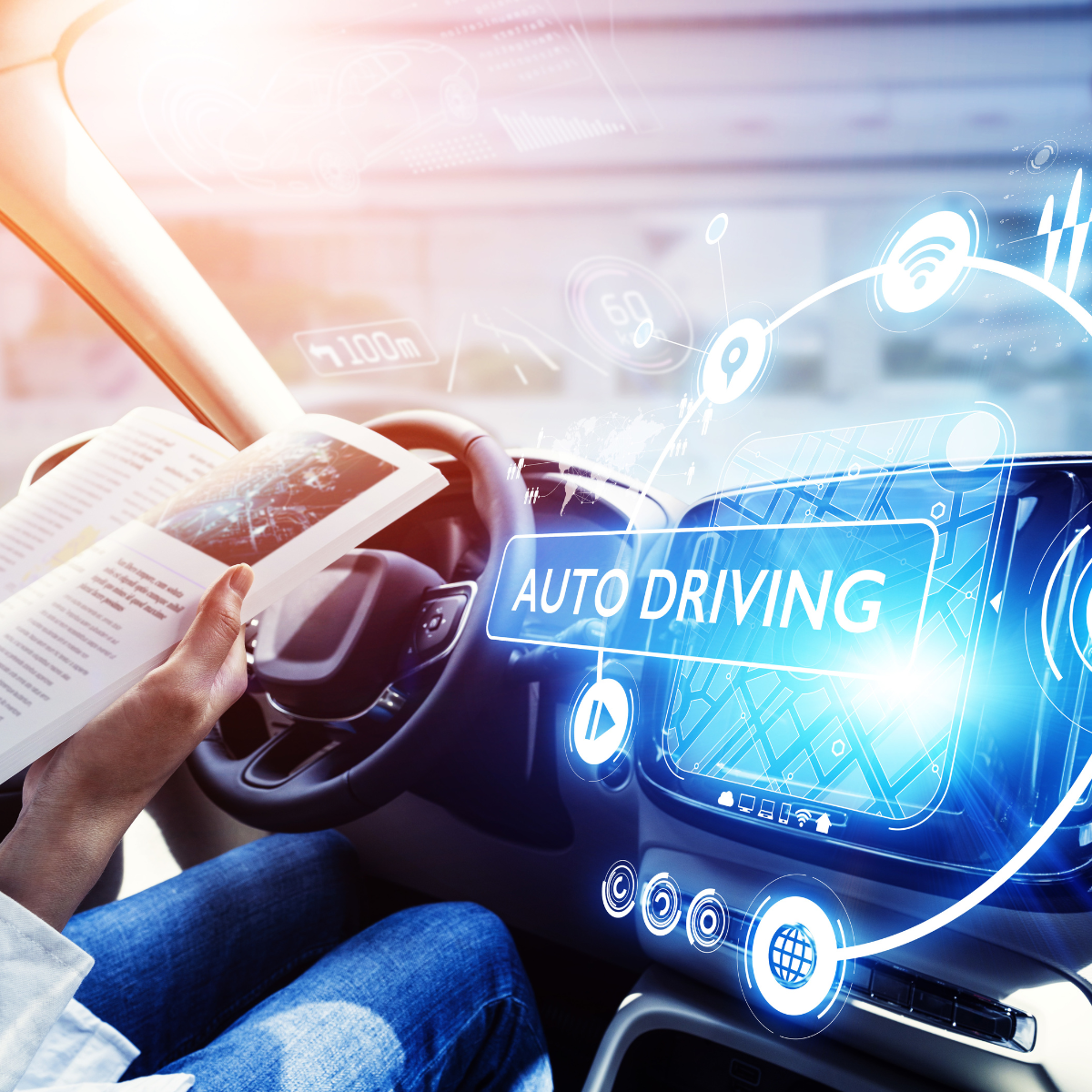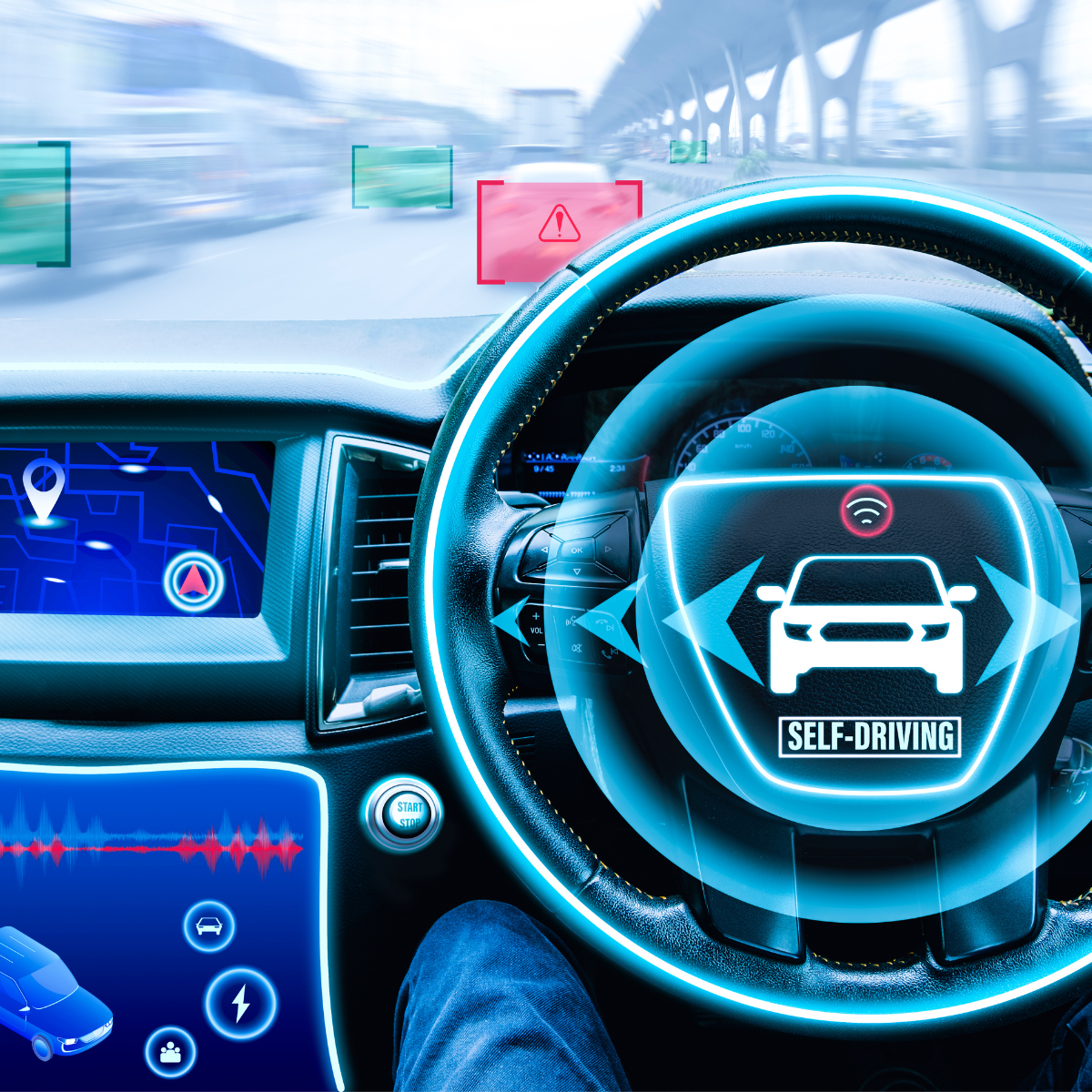The arrival of self-driving technology marks one of the most significant advancements in modern transportation. Self-driving cars, or autonomous vehicles, are expected to revolutionize how we think about commuting, with promises of safer, more efficient, and sustainable travel. In this article, we will explore the technology behind these vehicles, their potential benefits, and the challenges they face as they become more integrated into our daily lives.
What Are Self-Driving Cars?
Self-driving cars are vehicles capable of navigating and operating without human intervention. These vehicles use a combination of sensors, cameras, radar, and artificial intelligence (AI) to understand their environment and make real-time decisions. Unlike traditional vehicles, where drivers are in control, autonomous cars are designed to handle all aspects of driving, from acceleration to braking and navigation.

The self-driving car relies on advanced sensors and cameras to navigate safely on the road.
The Technology Behind Autonomous Vehicles
Self-driving cars rely on several core technologies that work together to enable safe, autonomous operation:
- Sensors and Cameras: These vehicles are equipped with sensors like LIDAR (Light Detection and Ranging), radar, and ultrasonic sensors that create a detailed map of the surroundings. Cameras placed around the vehicle help detect objects, pedestrians, and road signs to aid in decision-making.
- Artificial Intelligence (AI): AI algorithms process the data collected from sensors and cameras to interpret the vehicle’s environment. The AI then makes decisions about speed, direction, and maneuvers based on real-time analysis.
- Machine Learning: Machine learning allows the vehicle to improve over time by learning from a vast amount of driving data. This continuous learning process helps autonomous cars perform better in a wide range of driving conditions.
- Connectivity: Autonomous vehicles can communicate with each other and the surrounding infrastructure, such as traffic lights and road sensors. This connectivity ensures smoother traffic flow, safer driving, and more effective responses to traffic conditions.
Levels of Autonomy in Vehicles
Self-driving cars are classified based on their level of automation, from Level 0 (no automation) to Level 5 (full autonomy). Here’s a breakdown of the different levels:

A breakdown of the different levels of automation in self-driving cars, from no automation to full autonomy.
- Level 0 (No Automation): The vehicle requires full human control, with no assistance.
- Level 1 (Driver Assistance): The car may assist with tasks like steering or acceleration, but the driver remains in full control.
- Level 2 (Partial Automation): The vehicle can control certain aspects of driving, but the driver must monitor and be ready to take over.
- Level 3 (Conditional Automation): The vehicle can handle all driving tasks in specific conditions, but a human driver must be available to intervene when necessary.
- Level 4 (High Automation): The car can drive itself in specific environments without human intervention, but may still require a driver in other situations.
- Level 5 (Full Automation): The vehicle can operate independently in any environment, without any human involvement.
Benefits of Autonomous Vehicles
Self-driving cars offer numerous advantages that could revolutionize transportation:
1. Enhanced Safety
One of the most significant benefits of self-driving cars is the potential to reduce traffic accidents. Human error accounts for the majority of road accidents, and autonomous vehicles, with their advanced sensors and AI systems, can help minimize these errors, leading to fewer accidents and safer roads.
2. Efficient Traffic Flow
Self-driving cars can communicate with one another and traffic systems to optimize travel routes and reduce congestion. This real-time interaction can prevent traffic jams and improve the overall efficiency of the transportation network.
3. Environmental Benefits
Autonomous vehicles could also have a positive impact on the environment. By improving driving efficiency and reducing traffic congestion, these cars can lower fuel consumption and reduce emissions. Many self-driving cars are also electric, contributing to further reductions in environmental impact.
4. Greater Accessibility
Self-driving cars could provide greater mobility for individuals who are unable to drive due to age, disability, or other factors. Autonomous vehicles can increase independence for those who may have previously been reliant on others for transportation.
5. Cost Savings
Although the initial cost of autonomous vehicles may be higher, the long-term savings can be significant. With fewer accidents and improved efficiency, the cost of insurance, repairs, and fuel consumption could decrease over time, making self-driving cars more affordable in the future.
Challenges Facing Autonomous Vehicles
Despite their potential, self-driving cars still face a number of challenges that need to be addressed before they can become a common sight on the roads.
1. Regulatory and Legal Issues
Governments and regulators will need to create new laws and regulations to govern the use of self-driving cars. Issues such as liability in case of accidents, insurance requirements, and the adaptation of road infrastructure are some of the key areas that need attention.
2. Technological Limitations
Self-driving technology, while impressive, is not perfect. Factors like weather conditions, such as rain, fog, or snow, can interfere with the sensors and cameras used by autonomous vehicles. Additionally, AI systems must be constantly improved to handle complex driving environments and unpredictable human behavior.
3. Public Perception and Trust
Public trust remains a significant hurdle. Many people are still skeptical about autonomous technology and its ability to operate safely without human oversight. Overcoming these concerns will require extensive education and awareness campaigns to demonstrate the safety and reliability of self-driving vehicles.
4. Cybersecurity Risks
As autonomous vehicles rely on connectivity and sophisticated software systems, they may be vulnerable to cyberattacks. Ensuring that these vehicles are secure from hacking attempts is critical to maintaining safety and preventing accidents caused by malicious interference.
The Future Outlook for Autonomous Vehicles
The future of self-driving cars is exciting, with many experts predicting that they will become increasingly common on the roads in the coming decades. While full autonomy (Level 5) may still be years away, many companies are already testing self-driving cars with a higher level of automation. As the technology improves, autonomous vehicles are expected to play a major role in transforming transportation systems worldwide.

Self-driving cars are expected to transform urban mobility, offering safer and more efficient travel.
Governments, automakers, and tech companies are collaborating to overcome the challenges of this new technology. In the next few years, we can expect to see more autonomous cars in controlled environments, such as ride-sharing services and deliveries. Eventually, autonomous vehicles could become a standard feature in everyday transportation, changing the way we live, work, and travel.
Conclusion
Self-driving cars are set to revolutionize the world of transportation. With their ability to drive without human input, these vehicles promise to improve road safety, reduce traffic congestion, and help protect the environment. While challenges remain, the future of autonomous vehicles looks bright. As technology advances and public confidence grows, self-driving cars may soon become a ubiquitous part of our daily lives, offering greater convenience, efficiency, and sustainability in the transportation sector.
You can read:






